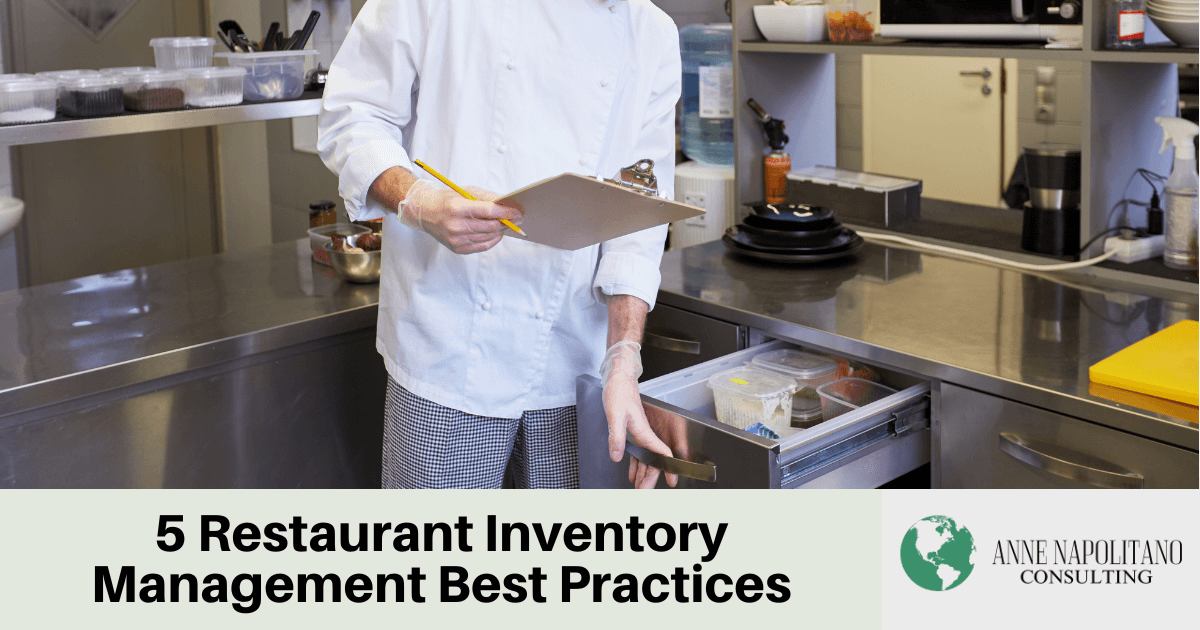
Restaurant inventory management best practices are critical because food constitutes the majority of a restaurant’s inventory. Mastering these practices is vital to a restaurant’s success, ensuring operational efficiency, impacting profitability, and enhancing overall performance. This blog post explores the unique challenges restaurants face and best practices for inventory management to optimize these crucial aspects of your business.
What is Inventory Management?
Inventory management for restaurants involves the systematic control of ordering, storing, and using a restaurant’s inventory. These items primarily include food and beverages, but also encompass any goods used in the daily operations of the restaurant, such as cooking equipment and tableware. Proper inventory management ensures that these items are acquired at the right time, in appropriate quantities, and at a favorable cost, all of which are essential to maintaining a restaurant’s service and food quality without excessive spending.
Challenges in Restaurant Inventory Management
Effective inventory management for restaurants is one of the major financial challenges for restaurants. Inventory management for restaurants is fraught with challenges that can significantly impact their financial health:
- Overstocking and Understocking: Without precise management, restaurants can find themselves either overstocking, leading to increased spoilage and waste, or understocking, which may result in running out of key ingredients during service.
- Cash Flow Constraints: Excessive inventory ties up valuable cash reserves that could otherwise be used for marketing or enhancing customer experiences.
- Price Volatility: Seasonal fluctuations and market trends can cause ingredient prices to vary widely, complicating budgeting and procurement strategies.
- Loss and Theft: Inadequate inventory tracking can lead to loss and theft, silently eroding profit margins.
These challenges can lead to direct financial losses, strained relationships with suppliers, and compromised service quality, ultimately affecting the restaurant’s reputation and sustainability. The impact of these challenges underscores the need for restaurant inventory management best practices.
Why Effective Inventory Management Matters for Restaurants
Proper inventory management can transform a restaurant’s operational efficiencies and financial outcomes by offering several benefits:
- Cost Control: Effective inventory management helps in minimizing waste and reducing unnecessary spending on excessive stock, thereby controlling costs.
- Increased Efficiency: With better inventory tracking and management, restaurants can streamline operations, reducing the time and labor spent on inventory counts and order processing.
- Improved Profit Margins: By reducing waste and optimizing stock levels, restaurants can improve their profit margins.
- Enhanced Customer Satisfaction: Ensuring that the right products are available when needed leads to consistent service and quality, increasing customer satisfaction and loyalty.
Investing in efficient inventory management is not merely an operational necessity but a strategic asset that drives long-term success.
Restaurant Inventory Management Best Practices
To increase the effectiveness of inventory management, restaurants should implement these best practices:
Best Practice 1: Utilize Strategic Purchasing
Start by using predictive analytics and detailed sales data to make informed purchasing decisions. Develop a system for assessing which items sell well and which do not, and adjust your ordering patterns accordingly. Building strong relationships with multiple suppliers can mitigate risks associated with sudden price hikes or shortages and provide negotiation leverage for better prices.
Best practice 2: Implement an Effective Tracking System
Employ a modern inventory management system that integrates seamlessly with your Point of Sale (POS) system for real-time inventory tracking. Utilize barcode scanners or RFID technology to ensure each item is accurately logged and managed. This will reduce human error, streamline the inventory process, and provide precise data to base your purchasing decisions on.
Best Practice 3: Minimize Spoilage and Waste
Educate your staff on the importance of portion control and the economic impact of waste. Implement a First-In-First-Out (FIFO) system to use older stock before newer deliveries. Regularly audit your menu to identify dishes that consistently result in waste and either modify them to use fewer perishable ingredients or remove them from the menu altogether.
Best Practice 4: Leverage Technology for Inventory Efficiency
Choose inventory management software that provides actionable insights into inventory levels, usage patterns, and can suggest optimal reorder points. This technology should also offer features like automated ordering systems, which can place orders based on predefined stock levels, ensuring you never run out of popular items nor overstock on slow-moving products.
Best Practice 5: Conduct Regular Inventory Audits
Schedule routine audits to compare the actual stock on hand against what is recorded in your inventory system. This practice helps identify discrepancies early and addresses potential issues such as theft or spoilage. Regular audits also reinforce the importance of inventory accuracy to staff and can help in pinpointing areas for operational improvement.
Partners in Your Success
Adhering to restaurant inventory management best practices is crucial for success in the hospitality industry. By understanding the challenges and implementing the best practices outlined above, restaurant owners can significantly enhance their operational efficiency and profitability.
If your restaurant’s inventory management processes need improvement, Anne Napolitano Consulting is here to help. We specialize in providing tailored strategies that improve your operations and financial health.
Ready to optimize your inventory and boost your restaurant’s profitability? Contact Anne Napolitano Consulting today for personalized solutions that deliver measurable results.

